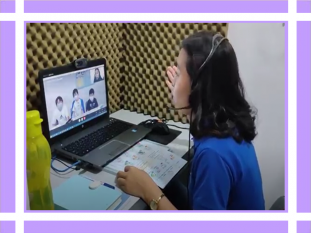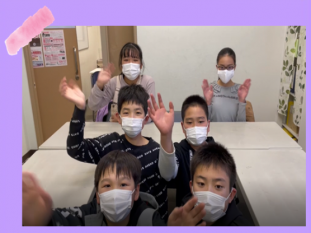
Why do most countries attach importance to the development of the Cram school?
Do Cram schools really contribute to the academic improvement of students?
How is it possible to use social media platforms to teach students at Cram schools?
These are some of the questions about Cram schools, and we will try to give answers to those questions in this blog.

Introduction
Cram schools (also known as Crammers) are specialized schools that prepare students to achieve certain goals, most often passing entrance exams to high school or university. The term “cramming” comes from the slang term “to study hard” or “to study a lot of material in a short period of time.” Asian countries like Japan, Korea, the Philippines, China, Taiwan, and India have the most cram schools.
Cram schools differ in form and style according to the social, cultural and educational contexts of the country. However, they typically concentrate on two areas: corrective education and preparation for competitive examinations.
Cram Schools in Japan and the Philippines
JAPAN
Cram schools (also known as Crammers) are specialized schools that prepare students to achieve certain goals, most often passing entrance exams to high school or university. The term “cramming” comes from the slang term “to study hard” or “to study a lot of material in a short period of time.” Asian countries like Japan, Korea, the Philippines, China, Taiwan, and India have the most cram schools.
Cram schools differ in form and style according to the social, cultural and educational contexts of the country. However, they typically concentrate on two areas: corrective education and preparation for competitive examinations.

have already begun to transition to one-on-one tutoring, but most have largely ignored the surge of new education technology that has blossomed. Following the outbreak of coronaviruses, traditional school operators in Japan are now thinking of offering online courses. The change is the opening of doors for technology startups that seek to help schools make the transition.
According to the 3-year-old startup, the number of students using online learning has increased more than tenfold since late February, when Japanese Prime Minister Shinzo Abe called for school closures.

Most Cram schools are open all year round but are busy during the summer and winter holidays. Students also attend Cram schools in the evening after taking regular classes at other times of the year. Those who have failed the entrance exams in the past and want to try to take it again can attend more often.
More than 70 percent of today’s schools have been established since 1976, nearly half of them since 1981. According to Japan’s recent estimates, the current number of academic cram schools is estimated at about 35,000.
There are two forms of “juku” or cram school in Japan. The first is “shingaku juku,”. It’s a Cram school where you prepare for a tough junior high, high school, or university entrance exam. The second form is known as “hoshuu juku,” or supplementary school, and it is for children who struggle in their daily classes.
PHILIPPINES
Cram schools are often called “study centers” or “review schools” in the Philippines. Students attend study centers to prepare and pass entrance examinations at college and university, as well as licensure exams such as the Philippine Bar Examination, Philippine Physician Licensure Examination, and Philippine Nurse Licensure Examination.

Korean and Japanese ‘barkadas,’ Vietnamese, Indian friends, and also young Ukrainians and entrepreneurs arrive in the Philippines for a reason: learning English in a native-speaking country or to receive a low-cost, English-taught university degree in health sciences or engineering.
Local Pinoys are hired to teach ESL module courses. A special holiday travel phenomenon in the Philippines is Asian “scholars” who want to learn to write and speak English. Although learning English is one of the most common reasons to visit the country, Asian and Ukrainian students often discover that the country is drastically underestimated and greatly overestimated, but it is still worth the trip.
Grow English Online Cram School in the Philippines (Grow Forward JP Iloilo)

Grow English began teaching English at Cram Schools in 2018, with the aim of providing live English communication group classes to students in grades 5-6 and junior high school with specific goals such as Junior High and High School exams, EIKEN test-taking practice, and many others are covered in a series of courses, including English vocabulary, sentence construction, listening and speaking practice.

Grow Forward JP is adapting to the new normal. This includes a safe working environment, which allows employees to engage even in the new normal set-up, accelerates the enhancement of class efficiency. Seasonal free trial courses for Cram schools also provide practice classes in preparation for new SY classes.
 For years, schools have had phone-off rules, but it might be time to take social media to the classroom. Grow Forward JP believes that the social network can be a valuable tool to connect with new ideas and stay up to date on current events and important people as well as providing a way for students to express themselves. Thanks to a variety of sites and ways to engage users.Educators are exploring new ways to integrate social media into their classrooms to teach students how to think critically and creatively about the environment and its role in this area.That’s all I’ve got for now.
For years, schools have had phone-off rules, but it might be time to take social media to the classroom. Grow Forward JP believes that the social network can be a valuable tool to connect with new ideas and stay up to date on current events and important people as well as providing a way for students to express themselves. Thanks to a variety of sites and ways to engage users.Educators are exploring new ways to integrate social media into their classrooms to teach students how to think critically and creatively about the environment and its role in this area.That’s all I’ve got for now.Remember that EMPOWERED LEARNERS ARE ENGAGED LEARNERS!

Yho Ghean Mhe Lastimoso Grow English

